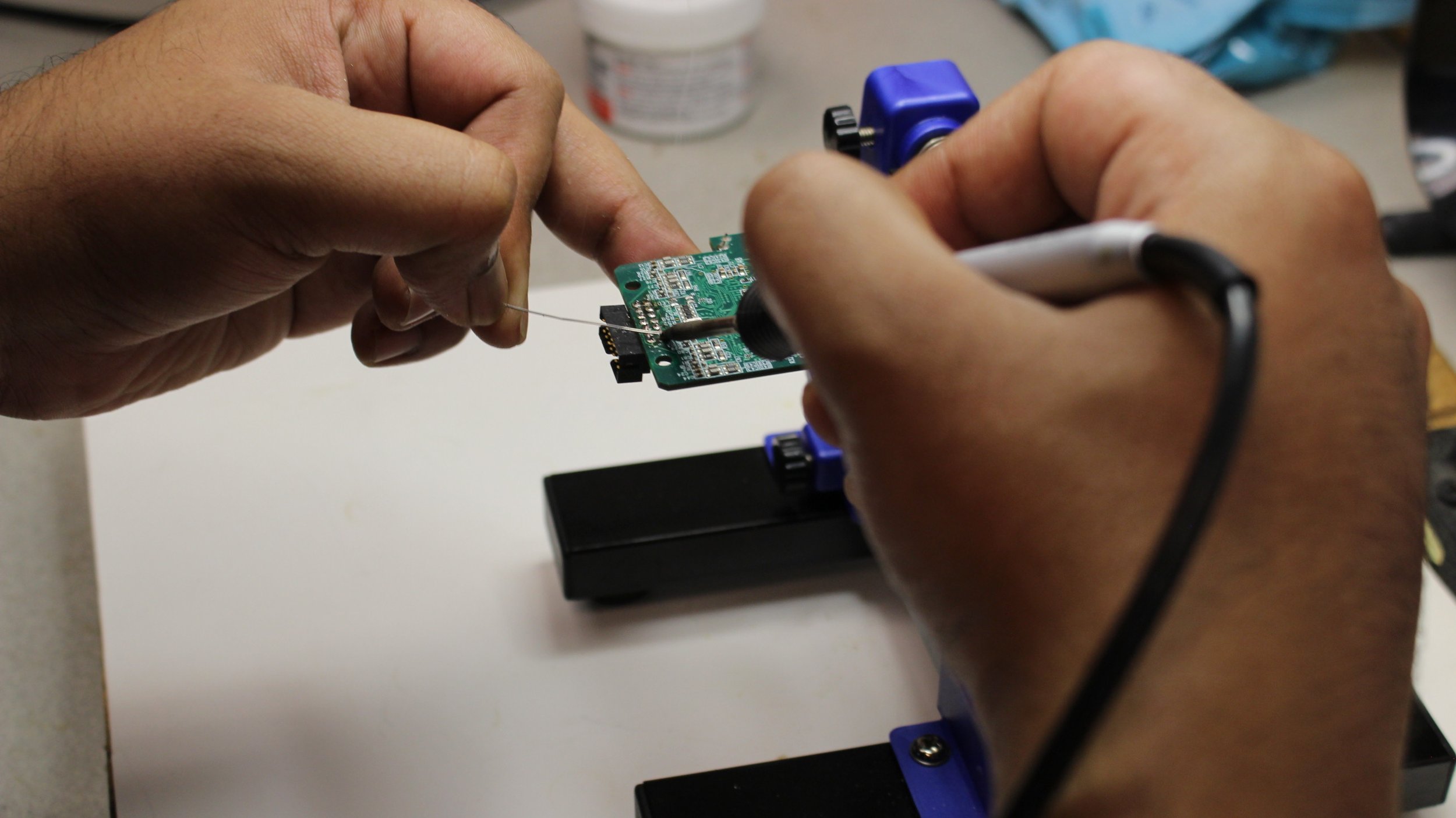Sensors 101
Here a Nanowear we get a lot of questions about our core technology – nanosensors. So, we figured we would break it down with a quick Q&A session with our Chief of R&D, Pratyush Rai.
——-
What are sensors?
Sensors are devices that detect the physical and chemical properties of their surroundings and record, indicate and/or respond to them. These properties can be changes in electrical potential, electromagnetic field, temperature, humidity, sound, light intensity, and chemical concentration. In the field of medicine, the sensors are useful in detection of biopotential originating from heart and brain, chemical concentration of metabolites in biological fluids and optical reflectance/absorbance of blood and other biological tissue.
The sensors are a part of systems consisting of sensing element to detect the physical or chemical properties of interest in form of physical or chemical energy transducer to convert the physical or chemical energy into electrical, mechanical, or optical signal, and transmission that sends the signal to be recorded, indicated and/or actuate response.
What are Nanosensors?
Nanosensors are sensors that are made of nanomaterials which have unique physical and chemical properties because of their nanometers scale and shape. The nanomaterials and nanostructures, due to their nanometer scale, have large surface area that interacts with the physical and chemical properties of the surroundings in a different way from the bulk material. The nanosensors have unique properties of high sensitivity, lower detection limits for the analyte, selectivity, variable electrical property. The nanopillars have a small footprint allowing for millions of nanopillars per sq.cm. of a flat surface. This results in a large surface are that allows for higher sensitivity to electrical, thermal flux. Similarly, various nanofibers, nanowires and their forest/fabric can be integrated into the sensing elements.
What are Nanosensors made from and how are they integrated into cloth materials?
Nanosensors are sensing devices with sensing elements made of nanomaterials or nanostructures that have electromagnetic, chemical, acoustic, thermoelectric, or optoelectronic properties. These properties enable nanosensors to detect electromagnetic, chemical, acoustic, thermal or optical signals. The nanomaterials or nanostructures can be nanoparticles, nanorods, nanotubes or nanocoils made of metals, metal oxides or polymers. A sensor’s surface with nanopores or nanoindents are also considered nanosensors. The nanosensor system also has a transducer and transmitter that are either off-the-shelf components or embedded within the nanosensor stack.
Nanosensors can be integrated in e-textiles at:
Fiber level: Sensing capability directly applied to the fiber by using nanoparticles as functional core (sheath-core architecture)
Nanostructured/Nanotextured fibers: Sensing capability directly applied to fibers by forming nanostructures on the fiber surface or nanotexture nano-size porosity of fibers.
Textile finishing level: sensing capability incorporated into fiber coatings (e.g. polymers), single, agglomerated (weakly bound) or aggregated (strongly bound) nanoparticles (ceramic, metal, organic, CNTs) of different shapes or as part of a coating.
Textile stack: Prefabricated nanosensors embedded, laminated or surface mounted on the textile.
Nanosensor integration at fiber or finishing level leverages fiber - the smallest indivisible element of the textile - as a platform. Alternatively, nanosensors can be a part of the textile stack using electronic packaging techniques engineered for incorporating prefabricated nanosensors into textile substrate.
What is the benefit of a textile based Nanosensor vs another type of sensor?
Nanomaterials such as silver nanoparticles are smaller than 100nm, a single fiber has greater than 1 micron diameter. This allows for incorporating nanomaterials on the surface of the fibers to make hierarchical structures. This provides the possibility of converting the very fibers of the textile into electrically active components.
Textile based sensor systems are flexible sensors that are made of textile or have texture and flexibility to be able to embed or integrate into textile of daily use. The resultant E-textile or smart textile are distinct from wearable computing systems because they emphasize on seamless integration of sensors and sensor electronics in the textile. Textiles act as flexible base material for medical health monitoring techniques and most natural material to use close to the human body. These textiles facilitate unobtrusive observation, where it simply senses and records physiological signals of the subject without any kind of interaction with the subject.
How are these sensors used in the medical industry today?
Over the past 2 decades, sensors have found many uses in textile products as wearable monitoring systems. They are being used as wireless monitoring devices in garments to track physiological signals for monitoring the health of chronically ill patients (cardiac, diabetic, apnea), pregnant women, babies, and in athletes. Combined with mobile phone application, wireless network and AI-ML analytics, these sensors are providing unprecedented insight in to the wearers health to enable better diagnosis and therapy.
What is the environmental impact of using textile based Nanosensors?
The very nature of a textile-based sensor technology is that it is washable and reusable. This allows for the sensors to be used repeatedly, thus reducing waste that may be created by plastic or other disposable based sensor products. In recent years the textile industry has pivoted towards recycling textile material to promote sustainability.
-Pratyush Rai, PhD


